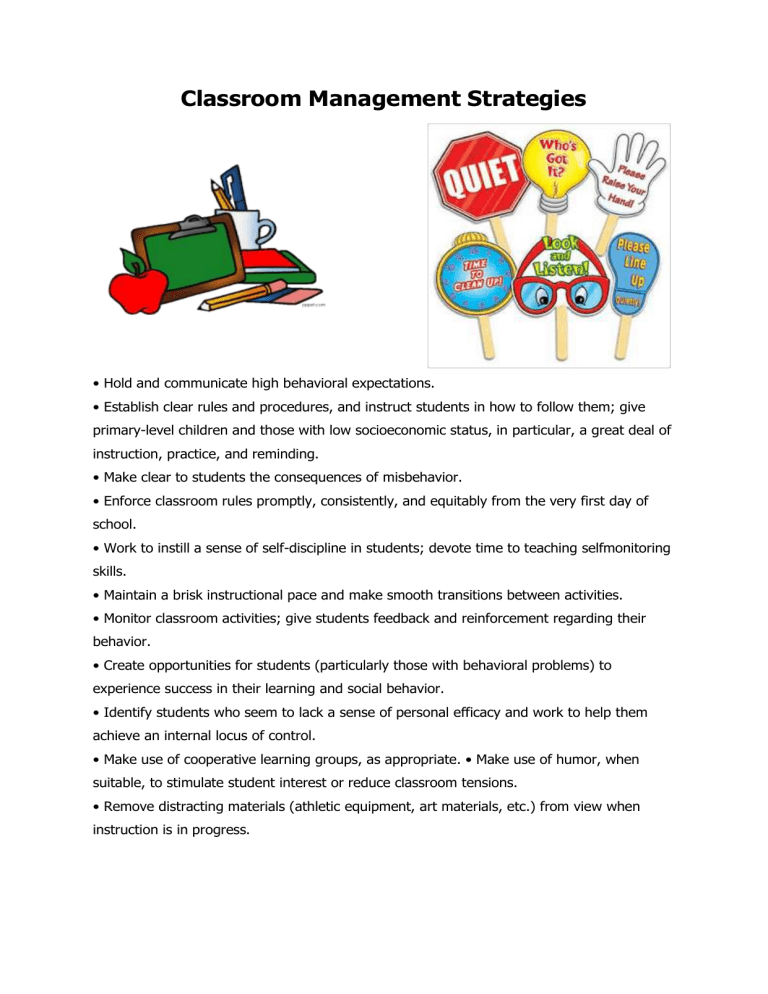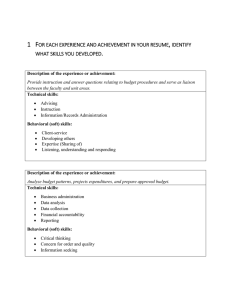
Classroom Management Strategies • Hold and communicate high behavioral expectations. • Establish clear rules and procedures, and instruct students in how to follow them; give primary-level children and those with low socioeconomic status, in particular, a great deal of instruction, practice, and reminding. • Make clear to students the consequences of misbehavior. • Enforce classroom rules promptly, consistently, and equitably from the very first day of school. • Work to instill a sense of self-discipline in students; devote time to teaching selfmonitoring skills. • Maintain a brisk instructional pace and make smooth transitions between activities. • Monitor classroom activities; give students feedback and reinforcement regarding their behavior. • Create opportunities for students (particularly those with behavioral problems) to experience success in their learning and social behavior. • Identify students who seem to lack a sense of personal efficacy and work to help them achieve an internal locus of control. • Make use of cooperative learning groups, as appropriate. • Make use of humor, when suitable, to stimulate student interest or reduce classroom tensions. • Remove distracting materials (athletic equipment, art materials, etc.) from view when instruction is in progress.


